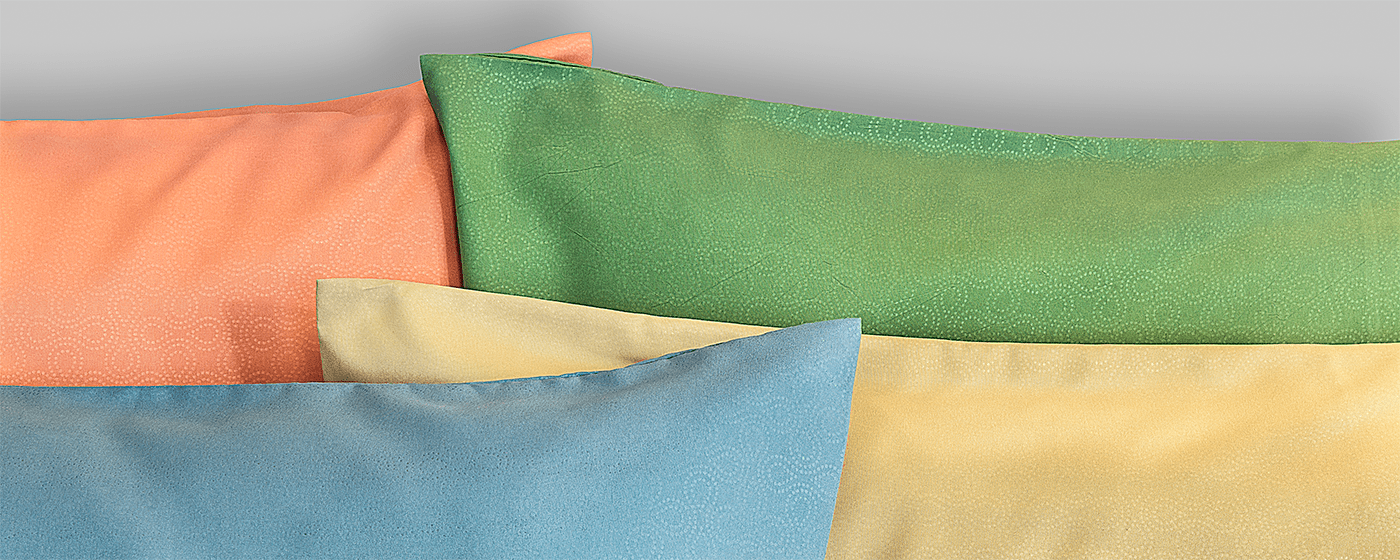Pillows: Finding and Keeping the Perfect Fit
9673 Views |

Humans aren’t the only creatures on Earth that seek the comforts of a pillow for a good night’s sleep. The invention of pillows with soft fillers appear later in history, but animals and humans since long before have found objects or each other to rest their heads on while sleeping. Humans initially started with primitive stone and wooden pillows, which later evolved into well-crafted headrests. For example, over across many Chinese dynasties, headrests were beautifully designed and decorated, and moulded from a variety of materials such has bronze and ceramic. In order to reduce back and shoulder pain from sleeping, pillows with soft inner materials were developed and became the norm we use today.
Pillow filler materials
Pillow filler material can be composed from a variety of materials. Natural materials have been the traditional fillers of pillows, such as wool, buckwheat, kapok, feather, down, and latex. Nowadays, synthetic materials such as polyester fibres and memory foam are rising in popularity. These materials can differ in softness, malleability, price, and durability. It is ultimately down to your own personal preferences to determine which type of material is most appealing to you. However, it can be hard to know where to start, so here is a brief breakdown of common filler materials to help you make your initial considerations:
- Polyester – soft, malleable, easy to care for, and doesn’t take too much from your wallet
- Down (e.g. duck, goose) – known for being luxuriously soft, keeps you well-insulated and warm, durable, but can be higher up in price and may not be fitting for those with allergies
- Latex or kapok – soft but can be dense and firm
- Plant seeds (e.g. buckwheat) – firm and highly malleable to fit and support your head and neck
Sleeping positions
A good pillow should not be too high or too low, and offers proper support to your head and neck. Your sleeping position is therefore an important factor in determining the type of pillows which best provide this support and reduce neck or back pain.
- Sleeping on your side – aim to look for a pillow that is rather firm and thick, in order to position your neck, spine, and head in a straight line, such as latex, kapok, or polyester pillows with a higher filler density
- Sleeping on your back – your pillows should not be too high in order to support the curvature of your spine in a comfortable manner, so if you prefer your pillows with a lot of fluff and softness then perhaps opt for laying two pillows on top of each other
- Sleeping on your stomach – this position can put more strain on your head and neck than other positions so use a flatter pillow that is softer or less dense than usual, or choose not to use a pillow and rest your head directly on the mattress
Caring for your pillow
Your pillow should be cleaned regularly to prevent the collection of moisture and to eliminate dust mites inhabiting your pillow. Just as there are many types of fillers for your pillow, each filler requires different methods of care and cleaning.
- Polyester – can be washed in your everyday washing machine but make sure you set it on a low spin cycle to prevent the fibres from clumping together, and most importantly do not dry at high temperatures because the heat will make the fibres lose their durability and quality
- Down – it is highly recommended that you send your pillows to a professional cleaning service to ensure it is properly washed and dried without clumped feathers or any lingering moisture which may ruin your pillow
- Latex – do not wash with water, and instead regularly let it air out naturally in a location without direct sunlight or high temperatures
- Plant material (e.g. buckwheat, kapok) – do not wash with water, and instead air out under strong sunlight
When using your pillow, a case should be on at all times to preserve the cleanliness of your pillow. This also allows convenience in cleaning as the case can easily be taken off and washed. For those who may have dust mite allergies, inserting a dust mite-proof pillow case under your usual pillow case can help reduce your symptoms and provides an extra layer of protection for your pillow.



